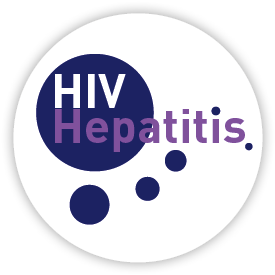Reducing efavirenz dose is unlikely to overcome interaction with levonorgestrel
1 October 2015. Related: Conference reports, Antiretrovirals, Women's health, Pregnancy, PK and drug interactions, PK Workshop 16th 2015.
The drug-drug interaction between efavirenz (EFV) and levonorgestrel (LNG) cannot be overcome with an EFV dose reduction from 600mg to 400mg per day according to data presented at the 16th International Workshop on Clinical Pharmacology of HIV & Hepatitis Therapy. [1]
LNG is a progestin-releasing sub-dermal implant with a contraceptive failure rate of <1%. It is primarily metabolised by the cytochrome P450 (CYP) 3A isoenzyme.
Investigators from Uganda, USA, UK and Ireland, led by Kimberley Scarsi from the University of Nebraska Medical Center, recently identified a significant drug-drug interaction between LNG and EFV. [2,3] In this study, LNG concentrations were reduced by 45-57% over 48 weeks of concomitant use with EFV compared with a control group of women not yet receiving ART. Three out of 20 (15%) women became pregnant during the 48-week study period.
Characterising this interaction is essential for HIV positive women worldwide, particularly as sub-dermal implants are one of only two preferred forms of long acting reversible contraception included in World Health Organisation (WHO) guidelines and many national recommendations.
So the group looked at whether or not decreasing EFV exposure by reducing the dose from 600mg to 400mg per day, would overcome the interaction between EFV and LNG in their study cohort.
This study defined the therapeutic range for EFV 12-14 hour post-dose concentrations as 1-4 mcg/mL. Non-adherence was defined as EFV 12-14 hour post-dose concentrations <1 mcg/mL.
Any LNG concentration that fell below the highest concentration at which a there was a pregnancy in the cohort (303 pg/ mL) was considered to be suboptimal LNG exposure.
The investigators accessed associations between LNG and EFV concentrations by Pearson’s correlation (r) and multiple linear regression analysis.
Twenty Ugandan women participated: median age 31 years (range 24-40), weight 59.5 kg (range 45-88) kg, and CD4 534 cells/mm3 (range 284-853), at study entry. Participants received EFV for a median 10 months (range 5-66) before entry; all had an undetectable viral load <200 cells/mm3. The median EFV C12-14h over the study period was 2.3 (0.1- 20.0) mcg/mL.
The investigators observed 4 participants with EFV concentrations >6 mcg/mL; 3/4 had the lowest LNG AUC of the study group. All LNG concentrations >900 pg/mL were observed in participants with EFV concentrations <1 mcg/mL. In bivariate analysis LNG was inversely correlated with EFV concentrations: r= –0.42, p<0.001. This relationship persisted after removing paired samples where the EFV concentration was consistent with recent study defined non-adherence (10 samples from 6 women): r= –0.40, p<0.001.
A significant regression equation was found in multivariate analysis with an R2 of 0.39, p<0.001. For every 1 mcg/mL increase in EFV plasma concentration, the LNG plasma concentration decreased by 31 pg/mL. Increased age, body weight, and time since implant insertion were also inversely associated with LNG plasma concentrations.
Including the three women who became pregnant during the study, 18 (90%) receiving EFV had at least one suboptimal LNG concentration <303 pg/mL. Of those 18 participants, 7 (39%) had an EFV concentration >4 mcg/mL (p=0.52), including 1 of 3 who became pregnant. The 2 without a suboptimal LNG concentration who became pregnant both had EFV concentrations <2 mcg/mL. LNG concentrations were inversely related to EFV concentrations after adjustment for other confounders.
Participants who had consistently supratherapeutic EFV exposure (four with EFV concentrations >6 mcg/mL) had persistently low LNG concentrations throughout the study. Those with non-adherence to EFV had the highest LNG concentrations. But approximately half of the participants with suboptimal LNG exposure – at high risk for unintended pregnancy – had EFV concentrations within the therapeutic range: 1-4 mcg/mL.
The investigators wrote: “Without further evidence, these data suggest that the drug-drug interaction between EFV and LNG cannot be overcome with a 33% EFV dose reduction from 600 mg to 400 mg per day.”
Comment
In a related poster the investigators described LNG concentrations in women receiving nevirapine (NVP)-based ART in the control group over 48 weeks. [4] (24-week data had been previously presented) [5]
At this time point LNG concentrations were 6-35% higher in women using a LNG implant with NVP. The investigators explained that this difference was partly due to the higher baseline weight in the control group and is unlikely to have clinical significance.
References:
- Scarsi K et al. Correlation between efavirenz and levonorgestrel plasma concentrations during a drug- drug interaction study. 16th International Workshop on Clinical Pharmacology of HIV & Hepatitis Therapy, 26-28 May 2015, Washington DC. Poster abstract 70.
- Scarsi K et al. Levonorgestrel implant + EFV-based ART: unintended pregnancies and associated PK data. CROI 2015. Seattle, Washington. 23-26 February 2015. Oral abstract 85LB.
http://www.croiconference.org/sessions/levonorgestrel-implant-efv-based-art-unintended-pregnancies-and-associated-pk-data - Clayden P. Unintended pregnancies with levonorgestrel implant due to drug interactions with efavirenz-based ART. HTB. 24 March 2015.
https://i-base.info/htb/28063 - Darin KM et al. Lack of clinically significant interaction between the levonorgestrel implant and nevirapine-based antiretroviral therapy. 16th International Workshop on Clinical Pharmacology of HIV & Hepatitis Therapy, 26-28 May 2015, Washington DC. Poster abstract 77.
- Scarsi K et al. Efavirenz- but not nevirapine-based antiretroviral therapy decreases exposure to the levonorgestrel released from a sub-dermal contraceptive implant. HIV Drug Therapy Glasgow Congress, 2-6 November 2014. Oral abstract 0131. Journal of the International AIDS Society 2014, 17(Suppl 3):19484.
http://www.jiasociety.org/index.php/jias/article/view/19484


